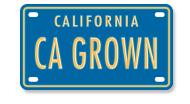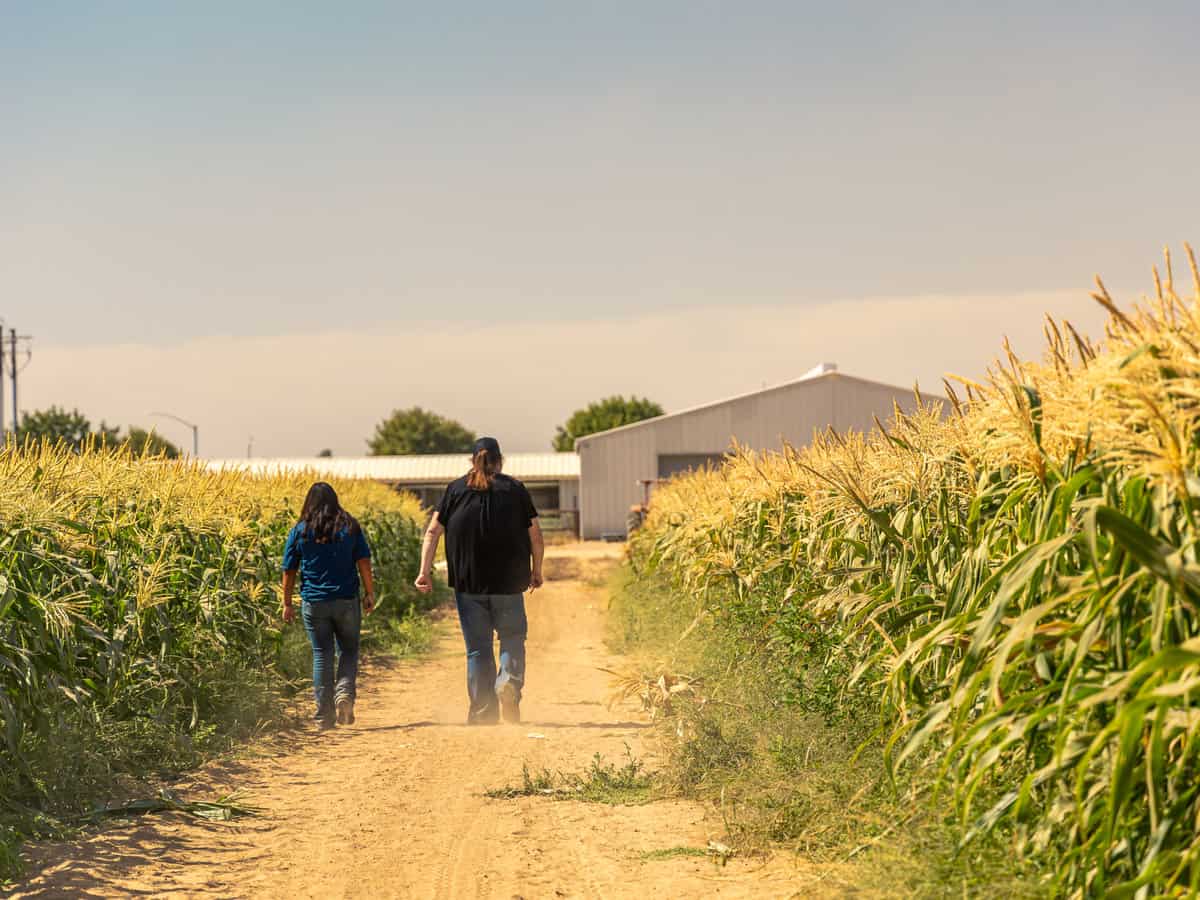FFA: Raising the Next Generation of Farmers + Leaders
California feeds the Nation, and FFA is designed to give our future farmers the skills they need to succeed.
The Central Valley is one of California’s most productive agricultural areas, so it’s no surprise that the region produces some of the state’s most successful FFA chapters. Madera, one of the state’s largest chapters, is home to a thriving FFA program – complete with a 20-acre on-campus farm. We met with Madera South ag instructor Tim Deniz to learn more.
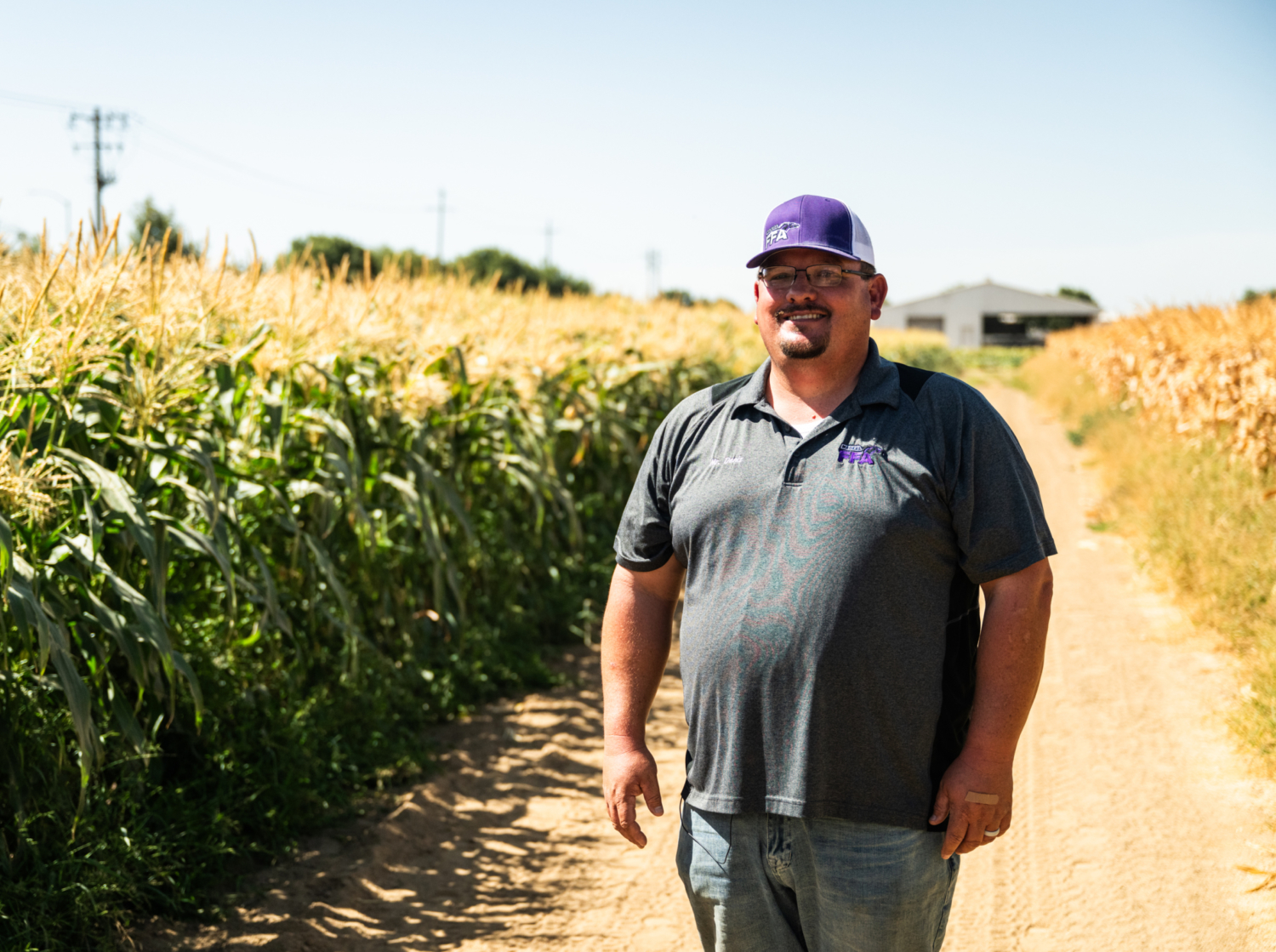
What is FFA?
Before we go any further, let’s take a quick look at the history of this organization. FFA stands for Future Farmers of America. The program was founded in 1928 by a group of forward-thinking young farmers.
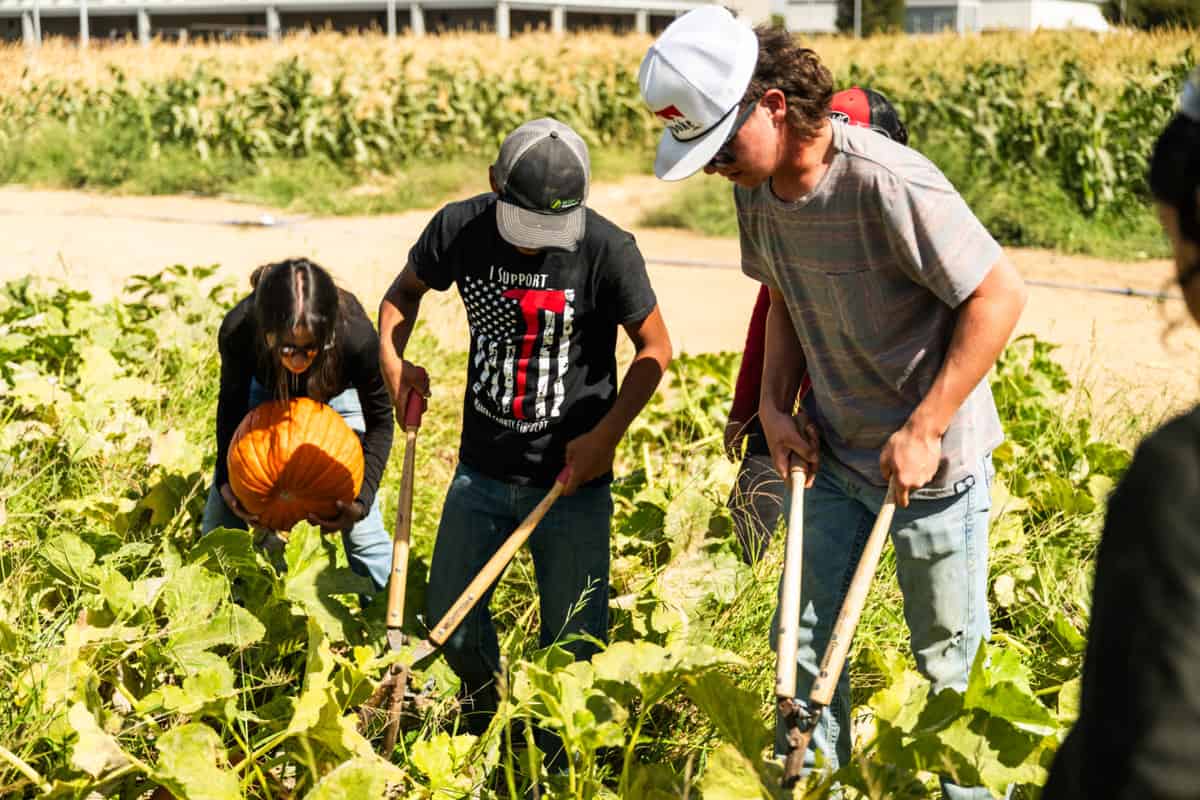
They understood that farming transcends the acts of planting seeds or harvesting crops – it’s a science, a business and an art. The goal of these founders was to arm agricultural students with information and experience to ensure the success of the next generation of farmers and give them the tools necessary to grow enough food to feed the nation.
Today, that vision includes over 945,000 student members across more than 9000 chapters in all 50 states, Puerto Rico and the US Virgin Islands.
When was Madera FFA founded?
The Madera FFA chapter was founded in 1928, and was one of the state’s first chapters. From the beginning, Madera FFA has been incredibly successful, producing numerous state champions and state and regional officers. Over the last 100 years, FFA’s popularity has continued to soar with national participation reaching an all-time high. Madera’s program alone boasts over 800 members.
What makes Madera FFA so successful?
Tim Deniz attributes the program’s success to community support. “I can’t say enough about the community of Madera and how giving they are,” Tim proudly says. On the school’s 20-acre farm, students grow citrus, corn, pumpkins and other crops. Local businesses and farmers regularly donate some of the necessary seed, inputs, and irrigation supplies. “Everything is so costly. Things like fertilizer and all the inputs that go into agriculture are at an all-time high. Not having to pass those expenses along to kids so they can do these projects is critical for our success.”
What are some of the opportunities available to Madera FFA students?

Madera FFA students participate in various supervised agricultural experiences, called SAEs. Tim elaborates, “The leadership program through FFA is amazing. We have a ton of kids involved in that, we have the summer crops projects SAEs where they grow corn and pumpkins.
We have animal project SAEs and several different facilities around the farm – a rabbitry, a horse, a beef and dairy barn, sheep, goats, and swine. In addition to that, we have career development events where students can compete in different areas tied to their career interests. We have a little bit of everything for every type of student here.”
Summer Crop SAE
To better understand what a supervised agricultural experience entails, let’s look at the Summer Crop SAE. Around April or May, students plant sweet corn and pumpkin seeds. They learn how to prepare the soil, irrigate the crops, and deal with weed and pest issues. The majority of this work takes place outside of school hours – think early mornings, after school, on weekends and throughout the summer.
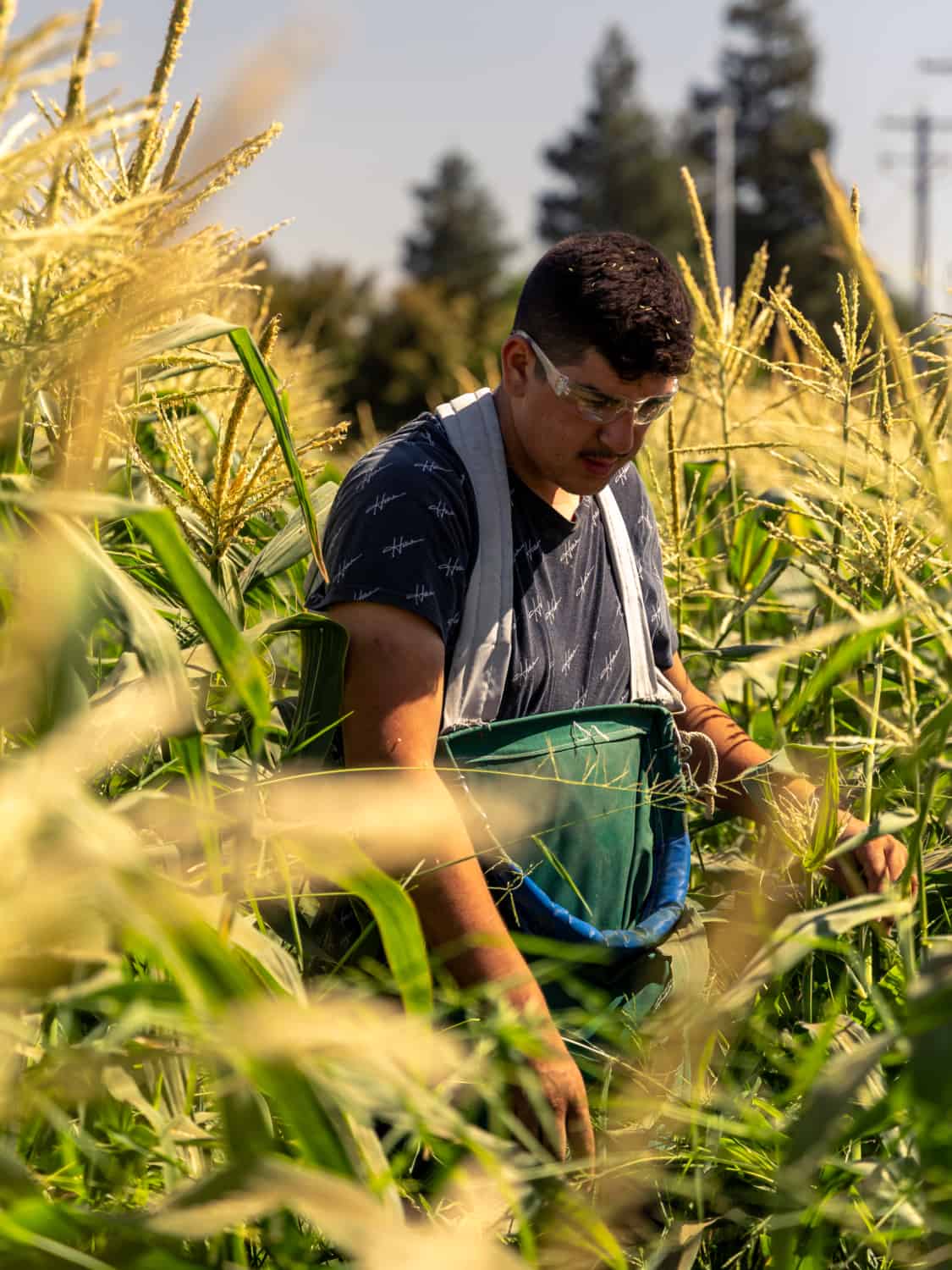

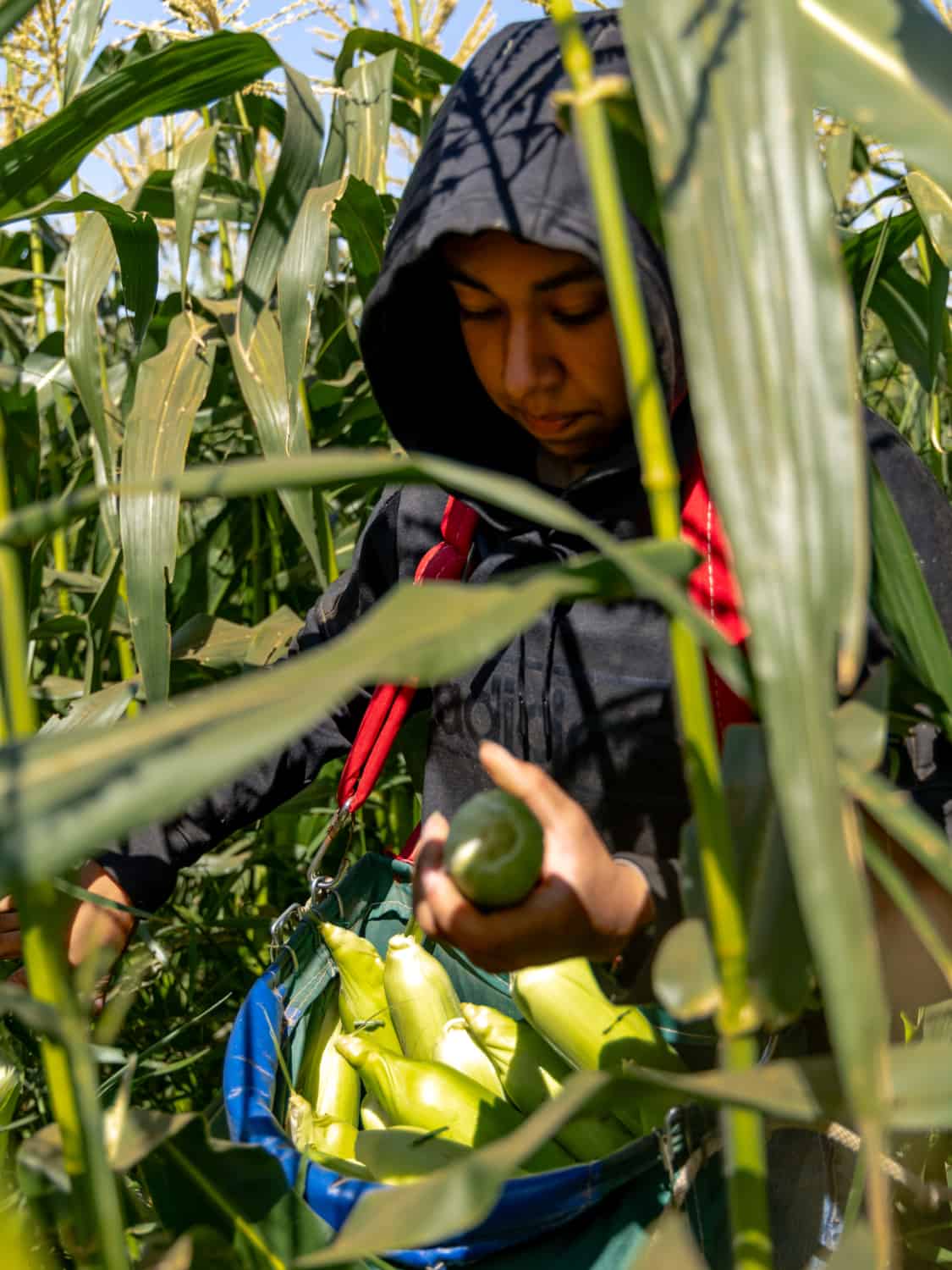
How much time do students spend working on an SAE?
Students spend anywhere from 3-10 hours a week working on the farm. “I wish consumers knew just how many hours it takes for a student to be involved and be successful in a project like this,” Tim states. “Much of the labor that we do out here is by hand. It’s kids planting seeds by hand, hoeing weeds, manually watering, irrigating and making sure everything is safe. The kids do a really good job, and I wish that people knew just how much work and how much time they put into it.”
What do the students do with the crops they grow?

By late summer, the corn is ready to harvest. Students harvest the corn by hand and market their crops to the local community. Much of this is done via social media (check out the Madera FFA Crops Cooperative page on Facebook). On Saturday mornings, students run an on-campus farmstand.
Tim boasts, “We have a pretty good following and tend to sell out of everything really fast!” He’s not kidding – customers line up a half hour in advance, and the farmstand typically sells out in under 40 minutes. Tim estimates that the students sell around 30 ears of corn a minute!
During the month of October, students switch gears and open an on-campus pumpkin patch. “Our pumpkin patch has gotten to be a big thing for the community of Madera. You can buy pumpkins at any big box store, but this is an experience. It gets people from outside in the community into our school farm, and it lets them get an idea of what agriculture is and lets them interact with the students”, Tim says.
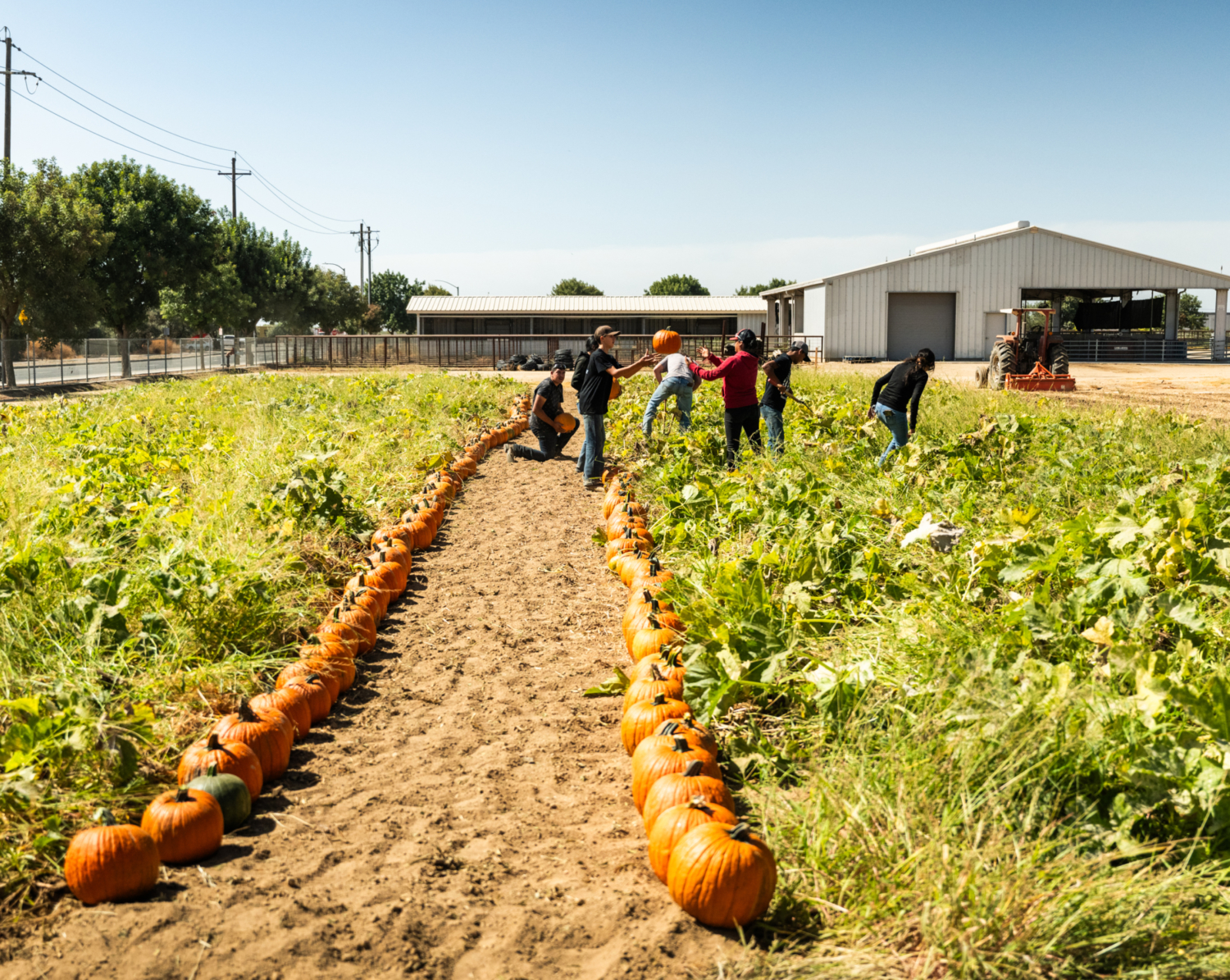
At the end of the project, students calculate their earnings. They begin with their earnings, deduct their expenses – namely the cost of crop inputs (which are either provided by the district or donated) and then divide the profits evenly between project participants.
Ag Literacy Day
In addition to SAEs and other activities, each October, Madera FFA hosts Ag Literacy Days. Over three days, 1600 local kindergarteners and first graders visit the Madera South Campus. The community service event is planned and staffed by around 100 FFA students.
Madera FFA members host five interactive stations to give the younger children their first taste of ag education. At the Fun Zone, kids engage in farm-based matching sorting games + puzzles. The Orange’s Journey Station teaches children about how oranges are grown with the help of a special coloring book. At the Petting Zoo, children learn how to care for animals and get to pet some of the livestock raised by FFA students.

The Plant a Pumpkin Station teaches children about the basic requirements that a plant needs to grow. At the end of the day, the children visit the final station, the Pumpkin Patch. Here, they take pictures and choose a pumpkin to take home.
To the younger children, Ag Literacy Day simply feels like a fun-filled field trip. While many local children come from farm families, for some, AG Literacy Day is their first introduction to how their food is grown. Saray Madriz, a Madera FFA student, explains, “Agriculture is a crucial part of our lives. Ag Literacy Day makes students aware of the importance and the impact it has.”

What’s it like to be an FFA student at Madera South?
We met with Saray Madriz to learn more about what she gains from her FFA experience. Saray is Madera’s Chapter Reporter, the West Fresno Madera FFA Section President, and is involved in multiple SAEs. Saray aspires to become a FFA Regional Officer.
From Saray:
FFA isn’t just about being around crops and animals. You can also do a SAE that can help you improve you as a person. It’s not just crops, and that’s what a lot of people think FFA is.
I’m involved in two different SAEs – raising and showing market rabbits in local county fairs, and I’m also involved in communications. I film Ag Action each week. It’s a weekly news show, and we inform our chapter about things that happened and will be happening, like projects and meetings.
The thing that I like most about FFA is all the opportunities it has and all the skills it’s taught me. I was never able to public speak before this. Now, I don’t get nervous talking in front of people, and it’s something I truly love.
A skill that I think is really important that FFA helped me develop is working on a team. It’s something that I personally struggle with because I’m really stubborn. I am a part of the Sectional Officer Team. It has taught me to know that people are there to support me and work as a team. I really have grown.
Another thing is my time management skills. I always say, ”I can do it later. I’ll do it in a week.” I’m definitely learning that I should be doing things before and that there are timelines. It’s a skill that I think I will use for the rest of my life.
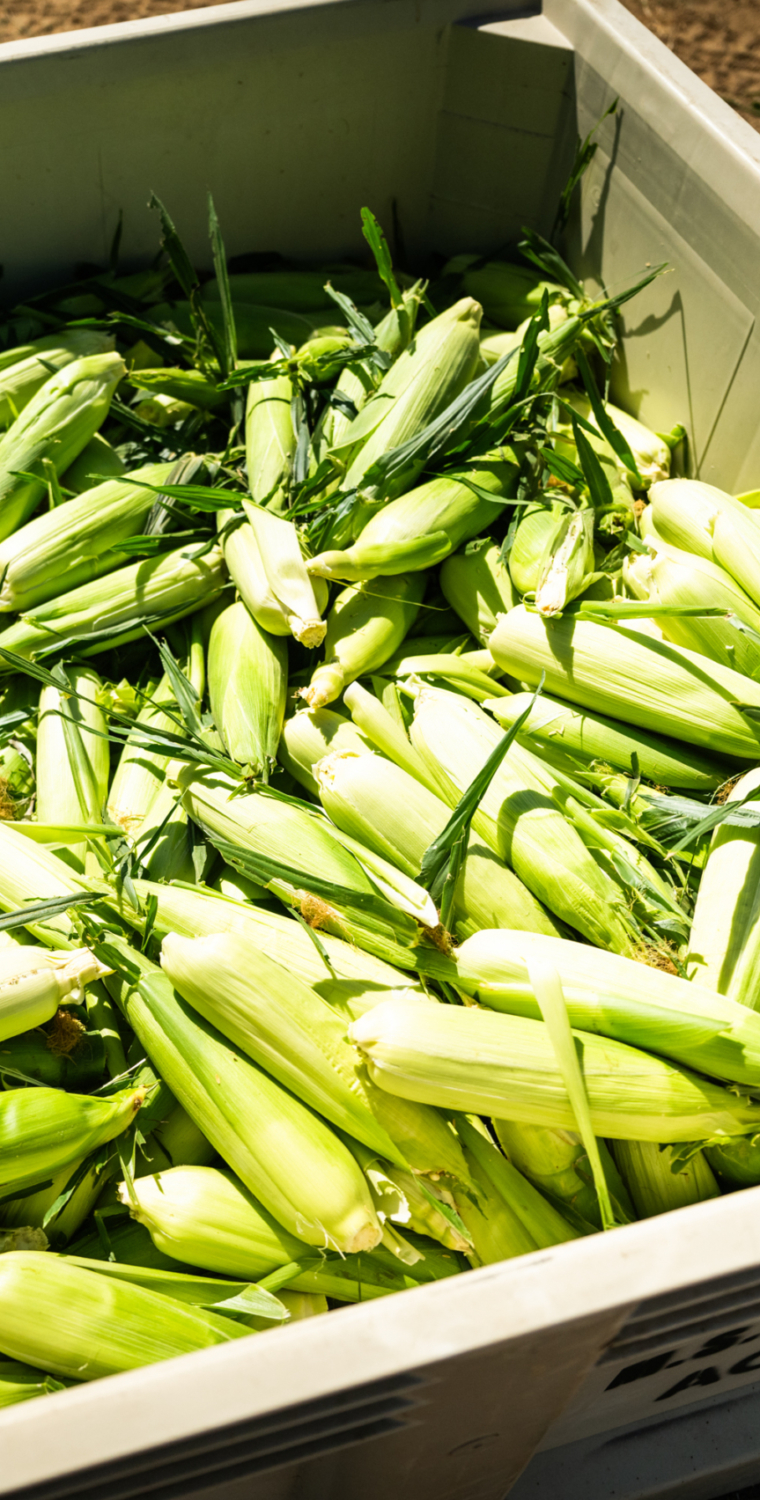
Want to get your hands on Madera FFA Corn or Pumpkins?
Madera FFA communicates most of their sale information through social media. Like/follow Madera FFA Crops Cooperative page on Facebook and keep an eye on their social media for sale dates!
How to buy Madera FFA-Grown Sweet Corn
Look for sweet corn sale notifications starting late summer. The Sweet Corn Stand is located at the corner of South Pine Street and Avenue 13.
How to visit the Madera FFA Pumpkin Patch
The Pumpkin Patch dates are released on the Madera FFA Crops Cooperative page in early October. The Pumpkin Patch is located at 705 W. Pecan Ave., Madera, CA 93637.
FFA FAQs
Many students who eventually participate in FFA start in 4-H. While 4-H is open to students as young as 5, FFA is part of a high school (or select middle school’s) agricultural education program. Both emphasize the importance of personal growth and leadership, but 4-H offers project-based learning outside the realm of agriculture and starts at a younger age.
FFA is part of an agricultural education program, but it’s not just for future farmers anymore! There is other learning taking place in FFA like public speaking, leadership, and organization – all which help students succeed in any field. Many former FFA students have become doctors, veterinarians, business professionals, chemists and more!
All FFA Students are required to memorize the FFA creed. This creed says a lot about what students learn in FFA. It states, “I believe in the future of agriculture, with a faith born not of words but of deeds – achievements won by the present and past generations of agriculturists; in the promise of better days through better ways, even as the better things we now enjoy have come to us from the struggles of former years.”
In addition to the creed, students learn a short, concise motto. The FFA Motto is not just a statement, but a way of life. It reads, “Learning to Do, Doing to Learn, Earning to Live, Living to Serve.”
Related Articles
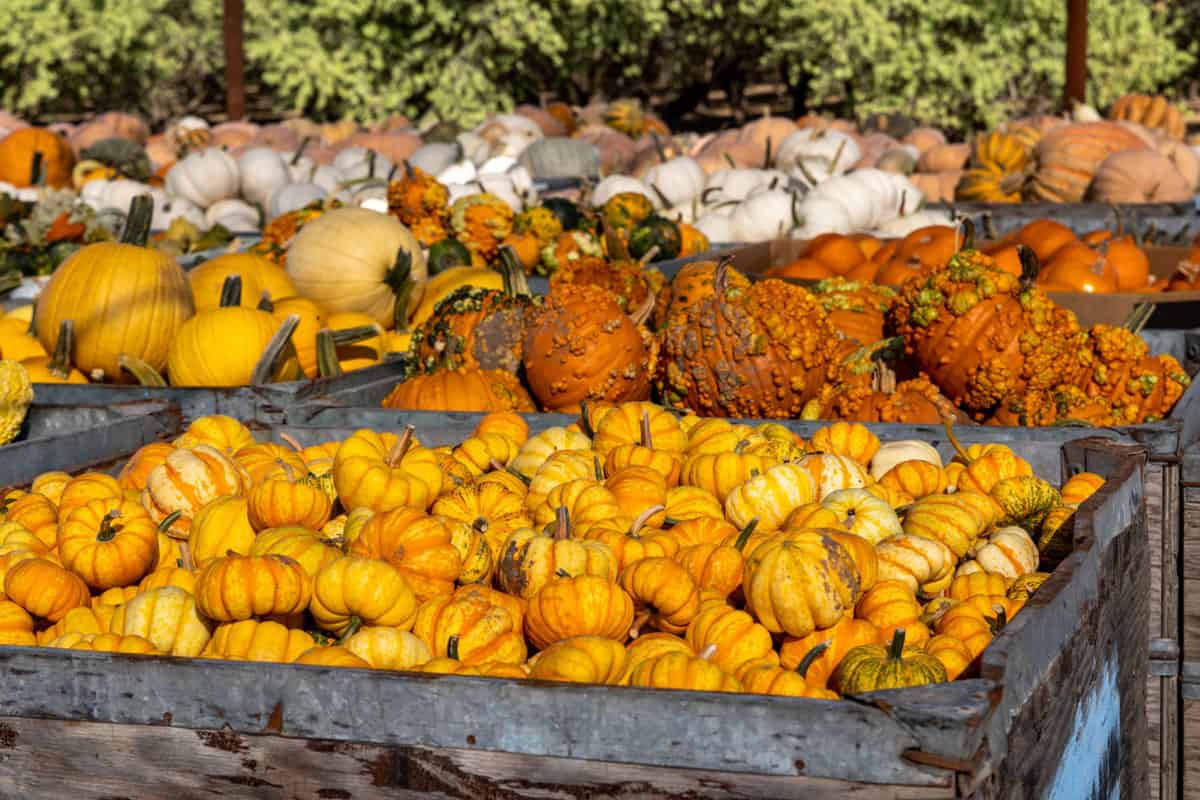
How are Pumpkins Grown?
Have you ever wondered how pumpkins are grown? We met with two California pumpkin farmers to get the inside scoop (no pun intended).
Ag in the Classroom
This organization aims to promote a greater understanding and appreciation of agriculture among students and teachers. The program offers in-person workshops and professional development opportunities for teachers, as well as online training and resources. They also sponsor field trips, like farm tours , agricultural fairs and festivals.
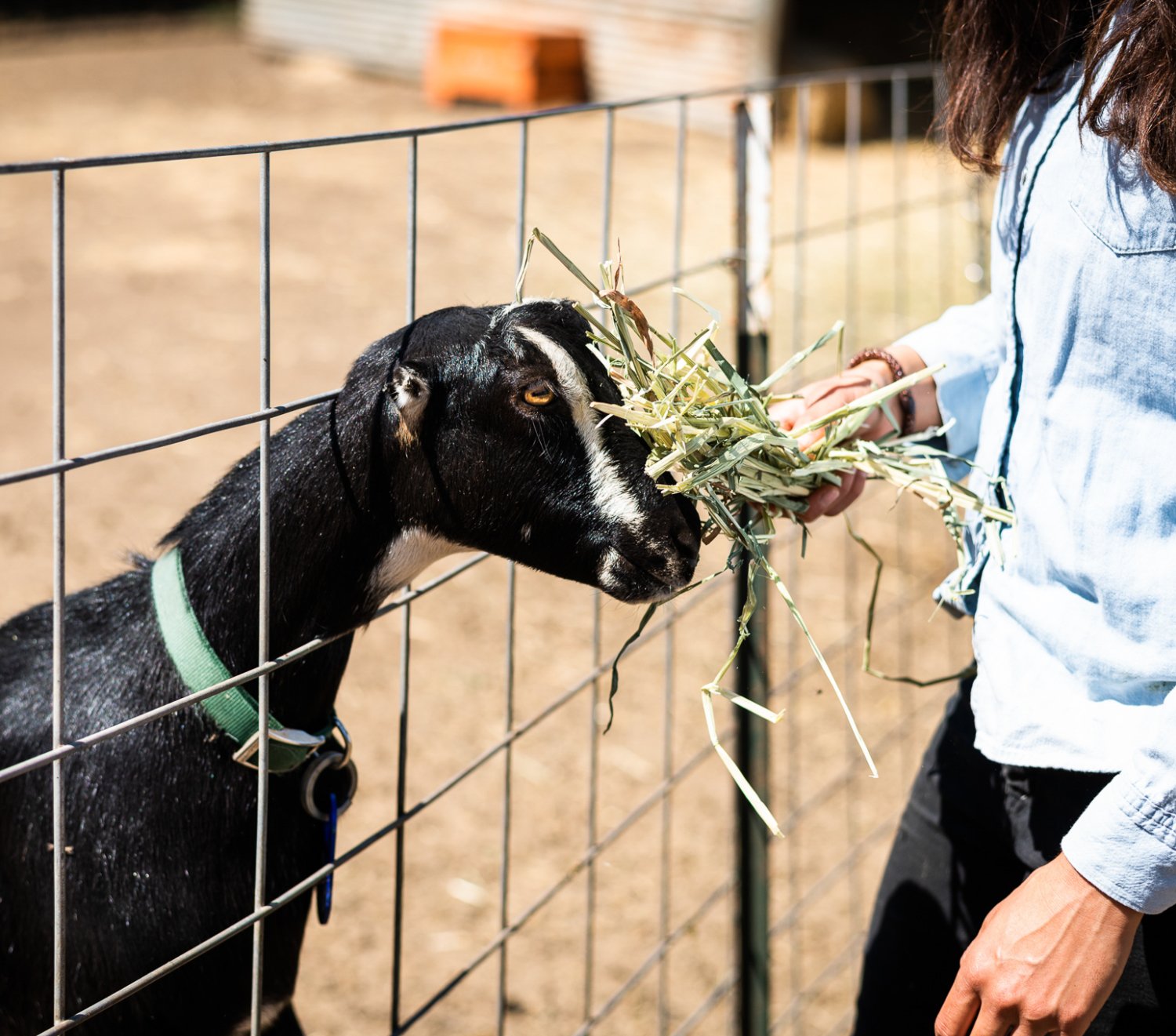
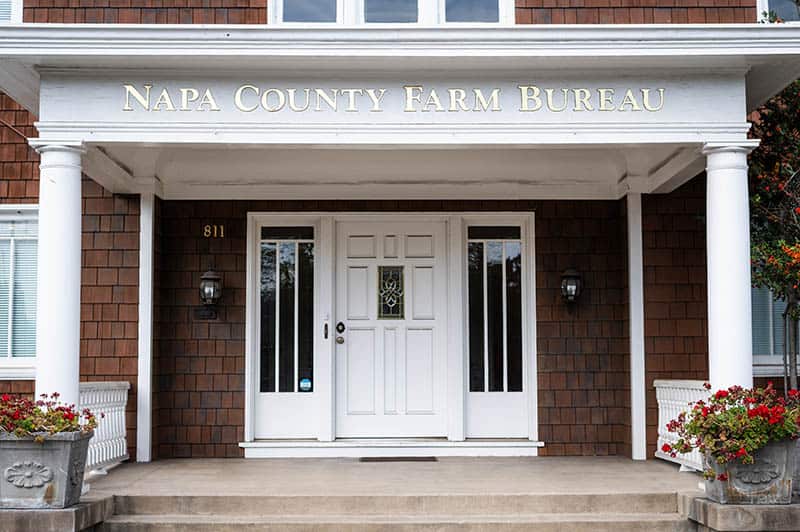
The Farm Bureau
You may have heard of the Farm Bureau, but do you know what it is and what it does for American agriculture and farming families? The Farm Bureau plays a role in shaping agricultural policy, advocating for farmers, and providing support and resources to members.
Article by Hilary Rance. Photography by James Collier and Hilary Rance.
